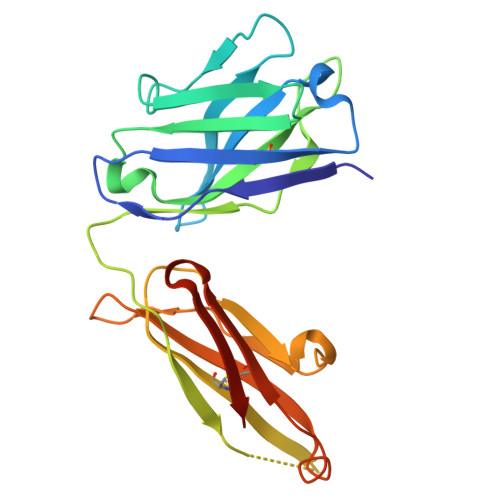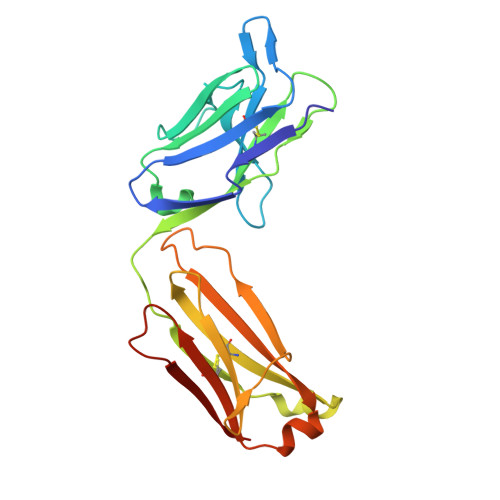APOE Christchurch-mimetic therapeutic antibody reduces APOE-mediated toxicity and tau phosphorylation.
Marino, C., Perez-Corredor, P., O'Hare, M., Heuer, A., Chmielewska, N., Gordon, H., Chandrahas, A.S., Gonzalez-Buendia, L., Delgado-Tirado, S., Doan, T.H., Vanderleest, T.E., Arevalo-Alquichire, S., Obar, R.A., Ortiz-Cordero, C., Villegas, A., Sepulveda-Falla, D., Kim, L.A., Lopera, F., Mahley, R., Huang, Y., Quiroz, Y.T., Arboleda-Velasquez, J.F.(2024) Alzheimers Dement 20: 819-836
- PubMed: 37791598
- DOI: https://doi.org/10.1002/alz.13436
- Primary Citation of Related Structures:
8G2O - PubMed Abstract:
We discovered that the APOE3 Christchurch (APOE3Ch) variant may provide resistance to Alzheimer's disease (AD). This resistance may be due to reduced pathological interactions between ApoE3Ch and heparan sulfate proteoglycans (HSPGs). We developed and characterized the binding, structure, and preclinical efficacy of novel antibodies targeting human ApoE-HSPG interactions. We found that one of these antibodies, called 7C11, preferentially bound ApoE4, a major risk factor for sporadic AD, and disrupts heparin-ApoE4 interactions. We also determined the crystal structure of a Fab fragment of 7C11 and used computer modeling to predict how it would bind to ApoE. When we tested 7C11 in mouse models, we found that it reduced recombinant ApoE-induced tau pathology in the retina of MAPT*P301S mice and curbed pTau S396 phosphorylation in brains of systemically treated APOE4 knock-in mice. Targeting ApoE-HSPG interactions using 7C11 antibody may be a promising approach to developing new therapies for AD.
Organizational Affiliation:
Schepens Eye Research Institute of Mass Eye and Ear and Department of Ophthalmology at Harvard Medical School, Boston, Massachusetts, USA.
















